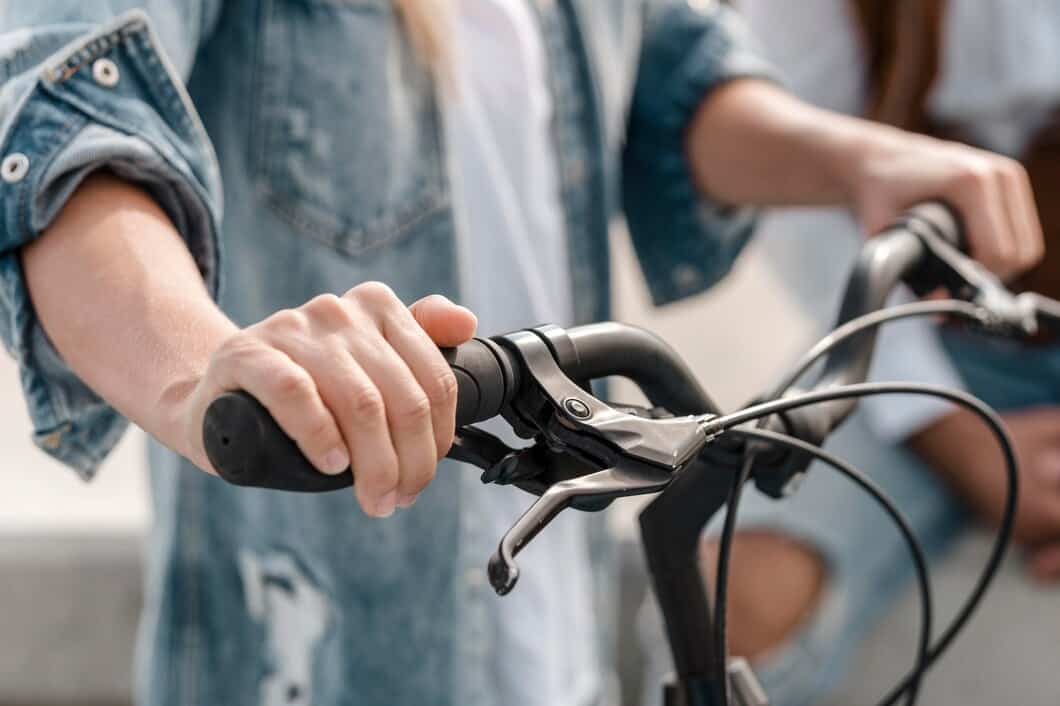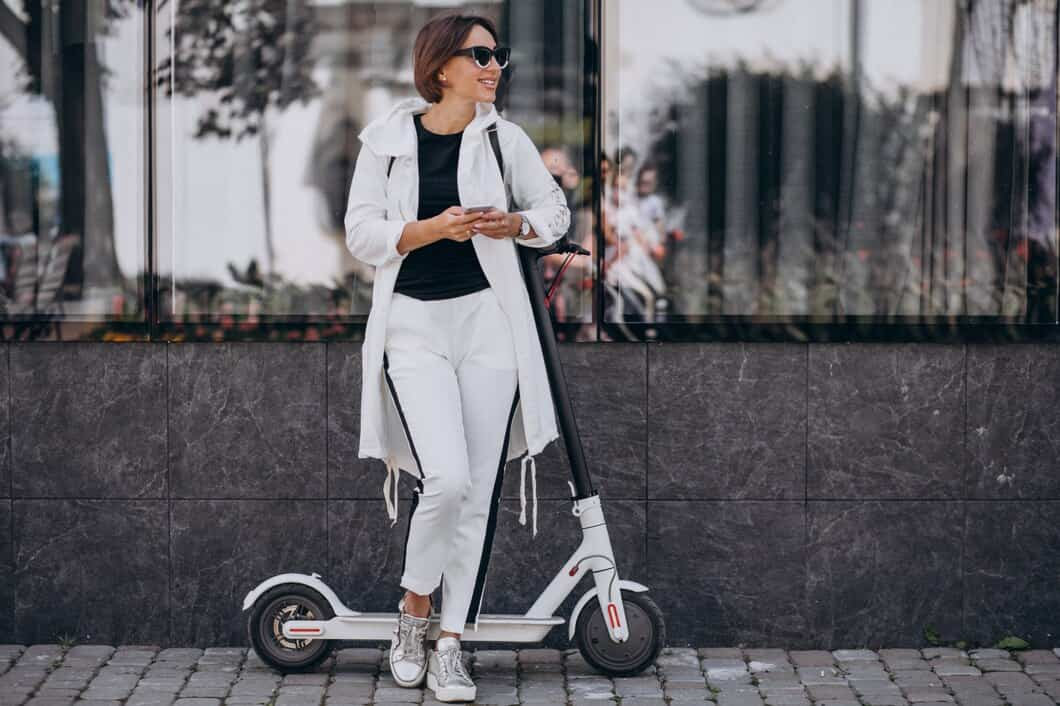How Fast Will A 500 Watt E-bike Go?
Time: 12 Apr 2024 22:53

Electric bikes, or e-bikes, are becoming increasingly popular as a way to get around town. They offer the benefits of a traditional bicycle, such as exercise and fresh air, with the added boost of an electric motor. This can make e-bikes a great option for people who want to ride further distances or who live in hilly areas.
One of the most important factors to consider when choosing an e-bike is its speed. The speed of an e-bike is determined by a number of factors, including the power of the motor, the weight of the bike, and the rider's weight. However, as a general rule, a 500-watt e-bike can travel at speeds of up to 20 miles per hour.
What is the top speed of a 500 watt e-bike?
The top speed of a 500 watt e-bike will vary depending on a number of factors, including the weight of the rider, the terrain, and the level of pedal assist being used. However, as a general rule, a 500 watt e-bike will have a top speed of between 20 and 28 mph.
The higher the wattage of an e-bike's motor, the faster the bike will be able to go. However, it is important to note that the top speed of an e-bike is not solely determined by the wattage of the motor. Other factors, such as the weight of the rider and the terrain, will also play a role in determining the bike's top speed.
If you are looking for an e-bike that can travel at high speeds, then you will need to choose a bike with a motor that has a wattage of at least 500 watts. However, it is important to keep in mind that the higher the wattage of the motor, the more expensive the bike will be.
How does a 500 watt e-bike compare to other e-bikes?
Compared to a 250-watt e-bike, a 500-watt e-bike generally has a higher top speed and can handle steeper hills more easily. For example, a 500-watt e-bike might have a top speed of 28 mph (45 km/h), while a 250-watt e-bike might have a top speed of 18 mph (30 km/h). The higher wattage also allows the motor to provide more assistance when pedaling, making it easier to accelerate and climb hills.
Compared to a 750-watt e-bike, a 500-watt e-bike has a lower top speed and less torque, making it less capable of handling very steep hills. However, a 500-watt e-bike is still more powerful than a 250-watt e-bike and can provide a significant boost when pedaling. It is also important to note that the top speed of an e-bike is also affected by factors such as the weight of the rider and the terrain, so the actual top speed may vary from the manufacturer's specifications.
What factors affect the speed of a 500 watt e-bike?
Several factors can influence the speed of a 500-watt e-bike. These include the type of motor, the size of the battery, the weight of the bike and rider, and the terrain being ridden on. A higher-wattage motor will generally provide more power and speed, while a larger battery will allow for longer rides before needing to be recharged. The weight of the bike and rider will also affect the speed, with lighter bikes being able to accelerate and reach higher speeds more easily. Finally, the terrain being ridden on will also impact the speed, with hills and rough terrain slowing the bike down.
In addition to these factors, the speed of a 500-watt e-bike can also be affected by the level of pedal assist being used. Most e-bikes offer multiple levels of pedal assist, which can provide varying amounts of power to help the rider pedal. Using a higher level of pedal assist will result in a faster speed, while a lower level of pedal assist will provide less power and a slower speed.
How can I make my 500 watt e-bike go faster?

There are several ways to make your 500-watt e-bike go faster. One way is to change the gearing. A smaller chainring in the front or a larger cassette in the rear will make the bike easier to pedal, which will allow you to go faster. Another way to make your e-bike go faster is to upgrade the motor. A higher-wattage motor will provide more power, which will allow you to go faster. Finally, you can also change the tires. Thinner tires will have less rolling resistance, which will also make the bike go faster.
It is important to note that making your e-bike go faster may void the warranty. It is also important to be aware of the laws in your area regarding e-bikes. Some areas have restrictions on the speed of e-bikes, so it is important to check the laws before you make any modifications to your bike.
If you are looking for a way to make your 500-watt e-bike go faster, there are several options available. However, it is important to be aware of the potential risks and legal implications before you make any modifications to your bike.
What are the legal speed limits for e-bikes in my area?
E-bikes are becoming increasingly popular, and with good reason. They're a great way to get around town without having to worry about traffic or parking. But what are the legal speed limits for e-bikes in your area? It depends on where you live. In some areas, e-bikes are classified as bicycles and are subject to the same speed limits as traditional bicycles. In other areas, e-bikes are classified as motor vehicles and are subject to the same speed limits as cars. To find out the legal speed limits for e-bikes in your area, you should check with your local authorities.
In general, the legal speed limit for e-bikes is 20 mph. However, some areas may have lower or higher speed limits. For example, in New York City, the legal speed limit for e-bikes is 15 mph. In California, the legal speed limit for e-bikes is 28 mph. It's important to note that these speed limits are for public roads. On private property, you may be able to ride your e-bike at a higher speed.
If you're caught riding your e-bike above the legal speed limit, you may be subject to a fine or other penalties. So it's important to be aware of the speed limits in your area and to ride your e-bike safely and responsibly.
What safety precautions should I take when riding an e-bike?
Since e-bikes offer assisted pedaling, always wear a helmet to protect yourself from any potential falls or accidents. Moreover, you should also ensure your e-bike is in perfect working order, including its brakes and tires, before riding.
It is advisable to ride your e-bike on bike paths or roads with less traffic, and avoid riding on busy main roads or highways. When riding in low-light conditions or at night, make sure to use proper lighting and reflective clothing to enhance your visibility to other road users.
Be aware of your surroundings and anticipate the actions of other vehicles and pedestrians. Use hand signals to indicate your intentions, and obey traffic laws and regulations to ensure safety on the road.
Regularly check your e-bike's battery life and ensure it is fully charged before riding for longer distances. Carry a spare battery or plan your route to include charging stations in case you need to recharge during your journey.
What is the range of a 500 watt e-bike?
The range of a 500 watt e-bike depends on a number of factors, including the weight of the rider and bike, the terrain, and the level of assist. In general, a 500 watt e-bike with a 500 watt-hour battery can travel between 20-50 miles on a single charge. However, if you are riding in hilly terrain or using a high level of assist, your range will be shorter.
There are a few things you can do to extend the range of your 500 watt e-bike. First, try to keep your weight and the weight of your bike as low as possible. Second, ride in flat terrain whenever possible. Third, use a lower level of assist when you don't need the extra power. Finally, make sure to charge your battery fully before each ride.
How do I choose the right e-bike for my needs?
When choosing the right e-bike for your needs, there are a few things to keep in mind. First, consider what type of riding you'll be doing. If you're planning on commuting to work or running errands, you'll want an e-bike that's comfortable and easy to ride. If you're planning on doing some off-roading, you'll need an e-bike that's more powerful and durable.
Once you've determined what type of riding you'll be doing, you can start to narrow down your choices. Consider the following factors: the motor, the battery, the frame, and the weight. The motor is responsible for powering the e-bike, so you'll want to make sure it's powerful enough for your needs. The battery is responsible for powering the motor, so you'll want to make sure it has a long range.
The frame is responsible for supporting the rider and the components, so you'll want to make sure it's made of a durable material. The weight is important if you plan on carrying the e-bike up stairs or into your car. Once you've considered all of these factors, you can start to narrow down your choices and find the right e-bike for your needs.
What are the pros and cons of owning an e-bike?
E-bikes offer a range of benefits, including reduced carbon emissions, improved fitness, and time savings. They are also a convenient and affordable mode of transportation. However, there are also some drawbacks to owning an e-bike. These include the cost of purchasing and maintaining the bike, the potential for theft, and the need to charge the battery regularly.
Despite these drawbacks, e-bikes offer a number of advantages that make them a worthwhile investment for many people. They are a great way to reduce your carbon footprint, improve your fitness, and save time on your commute. If you are considering purchasing an e-bike, it is important to weigh the pros and cons carefully to decide if it is the right choice for you.
Here is a table summarizing the pros and cons of owning an e-bike:
What is the cost of owning an e-bike?
The cost of owning an e-bike can vary depending on the type of e-bike you choose, the features it has, and the maintenance and repairs you need. Generally, you can expect to pay anywhere from $500 to $5,000 for an e-bike. The most expensive e-bikes will typically have more powerful motors, longer ranges, and more features. If you're on a budget, there are many affordable e-bikes available for less than $1,000. However, these bikes may not have the same features or performance as more expensive models.
In addition to the upfront cost of the e-bike, you'll also need to factor in the cost of maintenance and repairs. E-bikes require regular maintenance, such as tune-ups and battery replacements. The cost of maintenance will vary depending on the type of e-bike you have and the frequency of use. However, you can expect to pay around $100 to $200 per year for maintenance and repairs.
Frequently Asked Questions
What determines the speed of a 500-watt e-bike?
The speed of a 500-watt e-bike is determined by several factors, including the weight of the bike and rider, the terrain, the level of pedal assist, and the battery capacity.
What is the average speed of a 500-watt e-bike?
The average speed of a 500-watt e-bike is between 15 and 20 mph (24 to 32 km/h) on flat terrain with moderate pedal assist. However, the speed can vary depending on the factors mentioned above.
Can a 500-watt e-bike go faster than 20 mph?
Yes, a 500-watt e-bike can go faster than 20 mph with the help of a higher level of pedal assist, but it is important to note that this will reduce the battery life.
Are 500-watt e-bikes street legal?
In most jurisdictions, 500-watt e-bikes are street legal and do not require a license or registration. However, it is always best to check with local laws and regulations.
To Sum Up
In summary, the speed of a 500-watt e-bike depends on various factors like the terrain, rider weight, and battery level. Generally, riders can expect speeds of around 20-25 mph (32-40 km/h) on flat terrain. However, these speeds may vary depending on the specific conditions.
It's important to note that e-bike laws and regulations vary by region, so it's crucial to check local regulations before riding. Additionally, always wear a helmet and follow safe riding practices to ensure a pleasant and responsible e-biking experience.
Recommendation
How fast will a 500 watt e-bike go?
Electric bikes, or e-bikes, are becoming increasingly popular as a way to get around town. They offer the benefits of a traditional bicycle, such as exercise and fresh air, with the added boost of an...
What's the fastest an e-bike can go legally?
What is the legal speed limit for e-bikes? The legal speed limit for e-bikes varies depending on the jurisdiction. In the United States, the legal speed limit for e-bikes is 20 mph on federal lands a...
Does pedaling an electric bike charge the battery?
When it comes to riding an electric bike, many people wonder if pedaling the bike will charge the battery. The answer to this question is a little more complicated than a simple yes or no. In this abs...
How fast is 36V 500W in mph?
This article will provide an overview of the speed of a 36V 500W electric motor in miles per hour (mph). We'll discuss the factors that affect speed, such as voltage, wattage, and efficiency.We'll als...
What is the lifespan of the eBike battery?
The lifespan of an eBike battery is a crucial factor to consider when investing in an electric bike. Several factors contribute to battery lifespan, including battery type, maintenance practices, and...



